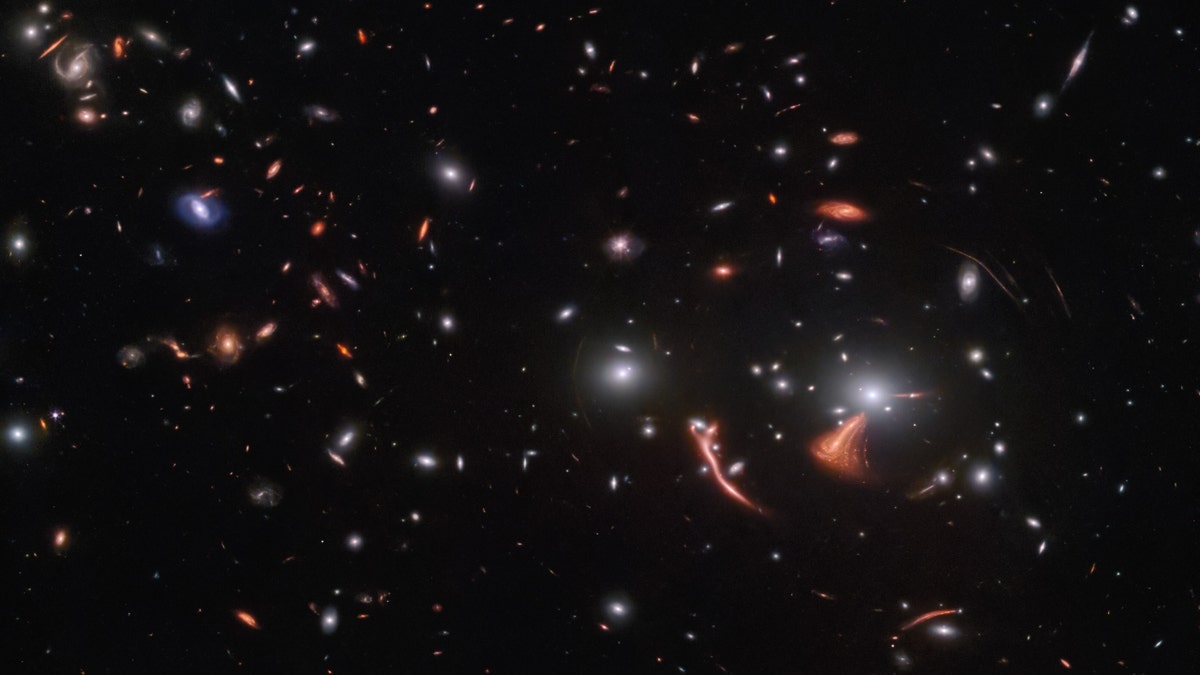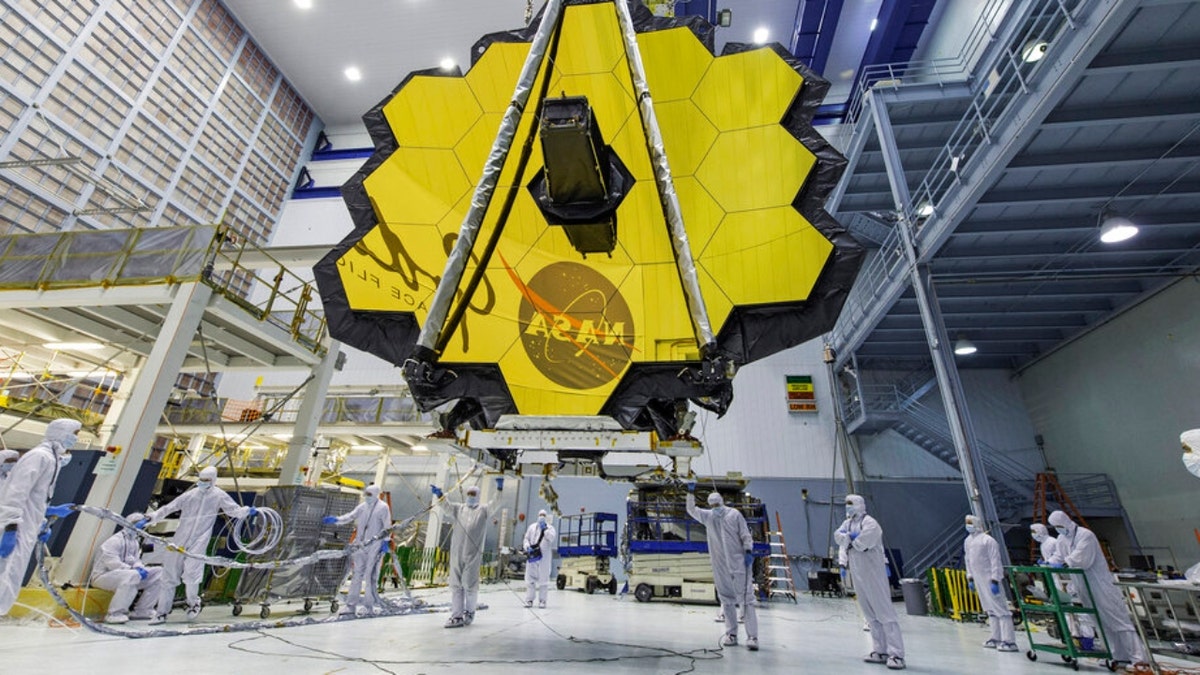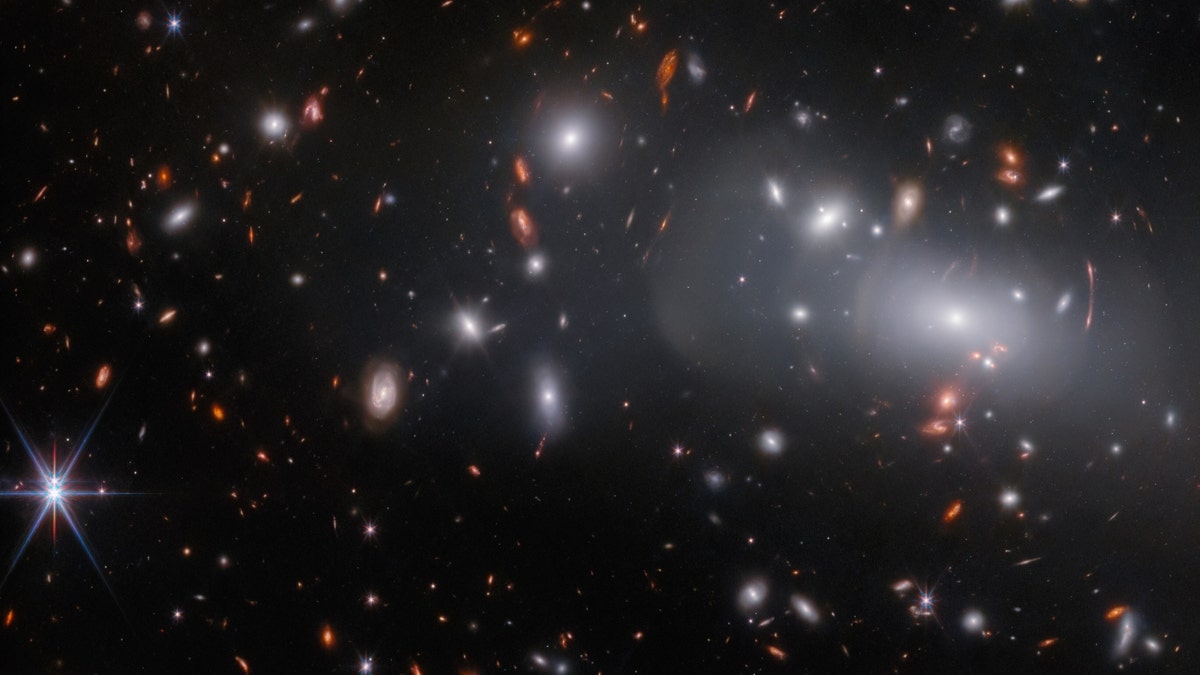Webb Space Telescope allows us to 'look into the past': Theoretical physicist
Theoretical physicist Dr. Michio Kaku explains the significance of new images provided by NASA's Webb Space Telescope on 'Sunday Night in America.'
NASA's James Webb Space Telescope has captured the fabric of space-time being warped.
In an image captured by the observatory's NIRCam instrument, distant galaxies are magnified and warped due to an effect called gravitational lensing.
Gravitational lensing occurs when a celestial object like the foreground galaxy cluster has such a massive gravitational pull that it warps time and space around it.
The lensing galaxy cluster, known as SDSS J1226+2149, lies at a distance of around 6.3 billion light-years from Earth in the constellation Coma Berenices.
WEBB SPACE TELESCOPE CAPTURES DUST STORM ON REMOTE PLANET

Many small galaxies are scattered on a black background: mainly, white, oval-shaped and red, spiral galaxies. To the lower right is a galaxy cluster, with a very large and bright elliptical galaxy at its center. Thin, reddish, stretched-out arcs surround it. One arc is thick and much brighter. Another red galaxy is large and warped, just next to the cluster core. (ESA/Webb, NASA & CSA, J. Rigby)
"Light follows that bend instead of traveling in a straight line, distorting and brightening what’s behind the object," the Webb team explained on Twitter.
A distant galaxy, known as the Cosmic Seahorse, is seen with a long distorted arc near the core, with its brightness greatly magnified by the gravitational lens.
The galaxies appear like bright smears of light spread throughout the image.
Using gravitation lensing, astronomers are able to study objects that would otherwise be too far away, revealing some of the most distant galaxies humanity has ever encountered.

In this April 13, 2017, photo provided by NASA, technicians lift the mirror of the James Webb Space Telescope using a crane at the Goddard Space Flight Center in Greenbelt, Maryland. (Laura Betz/NASA via AP)
NEIL DEGRASSE TYSON SAYS JAMES WEBB SPACE TELESCOPE IS WINDOW TO UNIVERSE 'NEVER BEFORE ACHIEVED'
This effect here has let scientists study star formation in the Cosmic Seahorse.
In order to do so, the team relied on previous studies from the Hubble Space Telescope, which the European Space Agency said provided the "prescription" for this gravitational lens.

This observation from the NASA/ESA/CSA James Webb Space Telescope features the massive galaxy cluster RX J2129. (ESA/Webb, NASA & CSA, P. Kelly )
"As well as revealing how quickly stars form and characterizing the environments in these galaxies that gave rise to new stars, these observations will demonstrate the capabilities of Webb and provide richly detailed datasets to the astronomical community," the agency said.
This is not the first time Webb has captured such an effect.
A previous image featuring the galaxy cluster RX J2129 showed three different images of the same supernova-hosting galaxy.
The telescope also captured never-before-seen details in a region known as Pandora's Cluster, with the combined mass of three galaxy clusters creating a gravitational lens and allowing scientists to observe more distant galaxies in the early universe.


